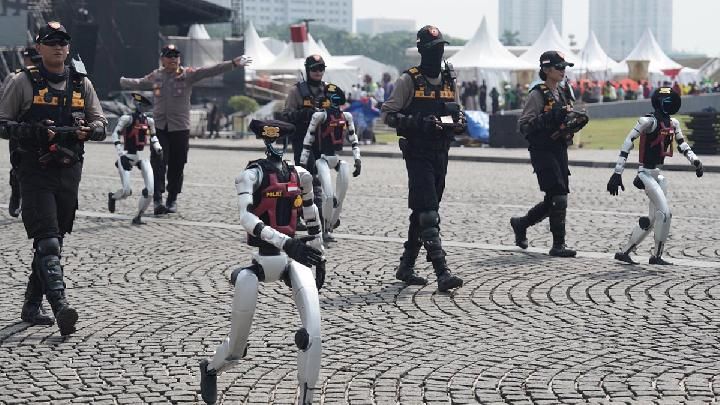Meet Shanghai’s “Robocop” — AI Robot Controlling Traffic Stuns the World
Shanghai deploys a humanoid AI robot to manage real traffic—sparking awe, debate, and a glimpse into the future of urban automation. Is this the beginning of robot-led cities?

A humanoid AI-powered traffic robot has taken over the streets of Shanghai, stunning citizens and social media users alike.
Dubbed unofficially as “Robocop”, the robot stands tall at a busy intersection, gesturing traffic signals, monitoring driver behavior, and even saluting pedestrians. Within hours, videos went viral across platforms like Weibo, Instagram, and X (formerly Twitter), with millions reacting in amazement — and curiosity.
🤖 How Does It Work?
The robot isn’t just for show.
Developed by a Shanghai-based robotics firm in partnership with local traffic authorities, the robot uses:
- 360-degree LiDAR vision
- Facial recognition cameras
- Voice command modules
- Real-time traffic analytics
It can track vehicles violating signals, record license plates, and even report data directly to the local traffic police in real time.
A spokesperson from Shanghai Traffic Bureau said:
“This is a trial model in our smart-city initiative. The robot is not just a traffic controller, but a surveillance, communication, and engagement tool.”
🌐 Internet Reacts: From Awe to Anxiety
As expected, social media exploded with reactions. Comments ranged from excitement over AI progress to concerns about surveillance and job replacement.
📱 One user wrote:
“This is like science fiction becoming real. First China, next the world.”
😨 Another warned:
“Cool until it starts issuing fines through face scans!”
The nickname “Robocop” caught on quickly, even though the robot is non-violent and unarmed — a far cry from Hollywood’s dystopian character.
🏙️ Smart Cities Becoming Real
This isn’t just a viral gimmick — Shanghai is testing real AI implementation in public safety systems. The city already uses:
- AI cameras at intersections to predict congestion
- Smart pedestrian crossings that adjust signal time based on foot traffic
- Drone-based monitoring for parking violations
The Robocop represents the next phase of urban automation, where humanoid machines become part of public life.
It’s part of China’s larger goal to create “AI City Prototypes” by 2030.
🧠 Ethical & Social Questions
While the tech is impressive, it opens a box of ethical questions:
- Will human traffic workers be replaced?
- Can citizens opt out of facial data tracking?
- What if the robot malfunctions?
Human rights organizations have already raised red flags, urging for clear regulations and transparency on how AI data is collected and used.
Dr. Anita Rao, an AI ethics expert, told Reuters:
“Technology in public space needs democratic oversight. We can’t let shiny robots distract us from questions of control and consent.”
🇮🇳 India’s Tech Enthusiasts Respond
Indian tech forums are buzzing with comparisons — from Mumbai’s chaotic intersections to Bengaluru’s traffic woes.
A tweet from a Bengaluru-based startup founder joked:
“We need five of these Robocops just for Silk Board!”
Indian cities have long struggled with enforcement, and some officials have expressed interest in pilot programs involving AI traffic systems in cities like Delhi, Pune, and Chennai.
🚦What’s Next for Shanghai?
Officials say this robot is just the beginning. Future models may include:
- Speech interaction for driver warnings
- Crowd management at festivals
- Emergency assistance features
As more cities watch this pilot closely, it’s clear: the future of public systems won’t just be smart — it’ll be alive, alert, and maybe humanoid.
✍️ Conclusion
Whether you see it as helpful or creepy, the rise of robotic assistants like Shanghai’s traffic robot is no longer sci-fi — it’s sidewalk reality.
As cities evolve, we must ask: Who watches the machines that now watch us?
For the latest updates in tech, news, war, health, and more — keep reading Phinex News.
